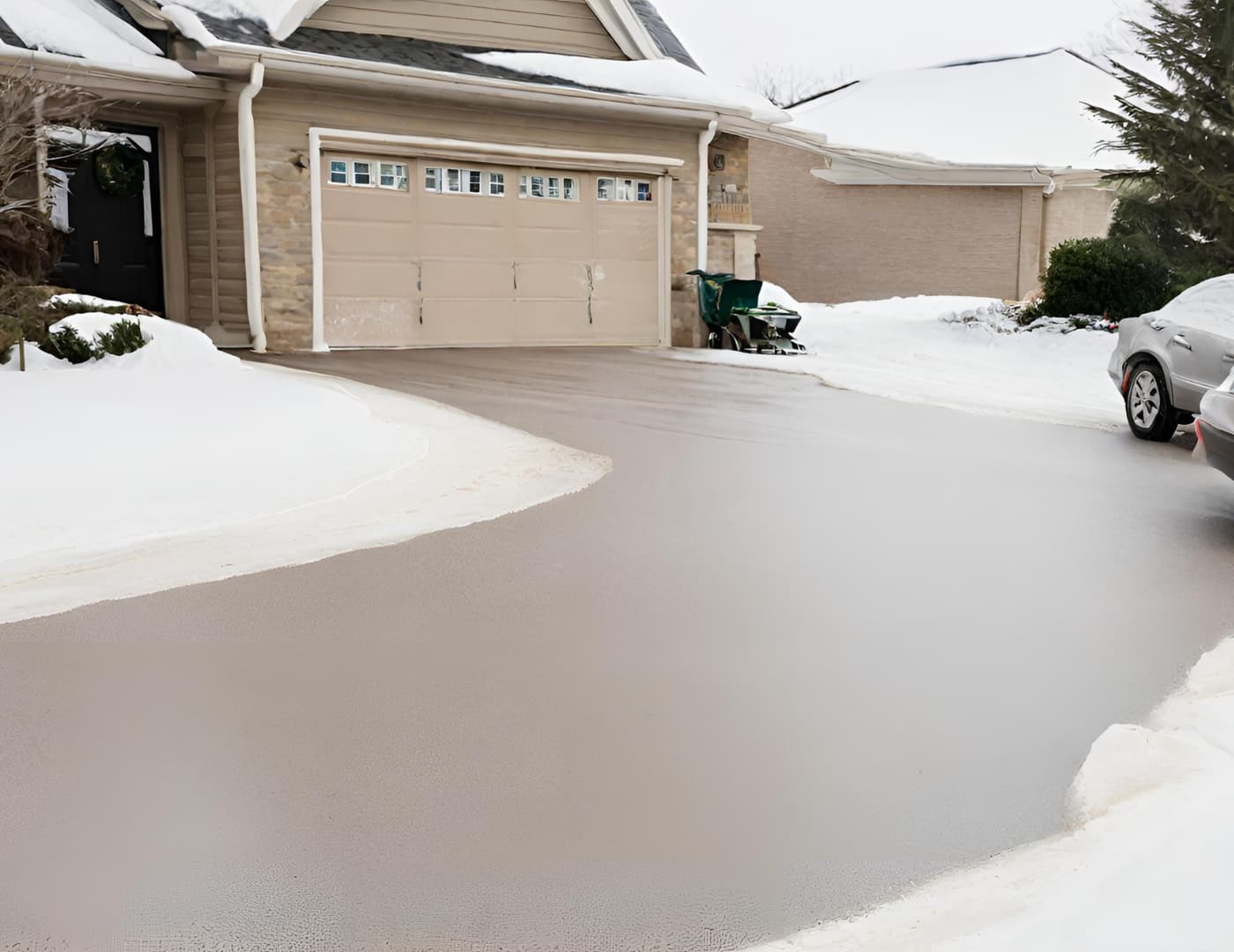As winter’s chill sets in, the safety of your driveway becomes a top concern. Finding the right solution is crucial. In this comprehensive guide, we’ll explore the pros and cons of two popular winter maintenance methods: driveway sanding and road deicer. By understanding the differences and considering your specific needs, you’ll be better equipped to make an informed decision for effective snow removal service.
Understanding Driveway Sanding
When it comes to winter safety for your driveway, “driveway sanding near me” is a phrase that many homeowners search for. Driveway sanding is a tried-and-true method of enhancing traction on icy surfaces. It involves the application of sand, typically coarse sand or a sand-salt mixture, to the driveway surface.
The primary goal of driveway sanding is to provide a gritty surface that improves traction, reducing the risk of slips and falls on icy driveways. Sand is known for its eco-friendliness, as it doesn’t harm the environment or cause damage to concrete or asphalt surfaces. This makes it an appealing choice for many homeowners concerned about both safety and the planet.
Understanding Salting
In the quest for an ice-free driveway, rock salt ice melter often takes center stage. Salting involves the application of salt or salt-based products to the driveway surface. This method works by lowering the freezing point of water, preventing ice from forming even in freezing temperatures.
Salting is highly effective in melting existing ice, making it a valuable choice when quick results are needed. The convenience and widespread availability of salt products have made them a go-to solution for many homeowners and property managers dealing with winter maintenance.
Comparing Driveway Sanding and Salting
Traction vs. Melting Ice:
- The fundamental difference between driveway sanding and salting lies in their primary purposes. Sanding aims to improve traction, making it an excellent choice for preventing slips and falls. Salting, on the other hand, focuses on melting existing ice, making it effective for rapidly eliminating icy patches.
Environmental Impact
- Consideration of the environmental impact is crucial. Sanding is often preferred by those concerned about environmental harm because it is eco-friendly and doesn’t introduce harmful chemicals into the environment. Salting, while effective, can have negative consequences on nearby plants, soil, and water bodies due to the chloride content in salt.
Cost and Availability
- Cost-effectiveness and availability are essential factors for homeowners. Sand is generally affordable and readily available. Salt, while also accessible, may have fluctuating prices depending on demand and supply. Comparing the long-term costs of both methods is advisable.
Residue and Cleanup
- Another consideration is the residue left behind after using these methods. Sand leaves a gritty residue on driveways, which some homeowners find less aesthetically pleasing. Salting, on the other hand, can leave a briny residue that may require cleaning to prevent potential damage to driveways.
Pros and Cons of Driveway Sanding
Driveway sanding offers several advantages. It provides immediate traction, reducing the risk of accidents on icy surfaces. Additionally, it is eco-friendly and doesn’t harm the environment. However, it has some downsides, including limited melting capabilities and the need for cleanup after winter.
Pros and Cons of Salting
Salting is known for its effectiveness in melting existing ice, making it a quick solution for icy driveways. It is widely available and convenient to use. However, it can harm the environment and may leave behind a messy residue that requires cleanup.
Choosing the Right Method for Your Driveway
When deciding between driveway sanding and salting, it’s essential to consider your unique circumstances and priorities. If you prioritize eco-friendliness and long-term affordability, driveway sanding may be your preferred choice. However, if rapid ice melting and convenience are your top concerns, salting could be the way to go.
Furthermore, your local climate, budget, and environmental regulations may influence your decision. Always check with local authorities and snow removal service providers for guidance on the best solution for your specific area.
Conclusion
In the quest for a safe and ice-free driveway, both driveway sanding and salting have their merits. Each method has its unique advantages and disadvantages, making them suitable for different scenarios. By understanding the distinctions and considering your specific needs and priorities, you can make an informed decision to ensure effective winter snow removal service for your driveway. Remember that a combination of methods, or even consulting with a professional snow removal service, may be the ideal solution to keep your driveway safe during the winter months.
